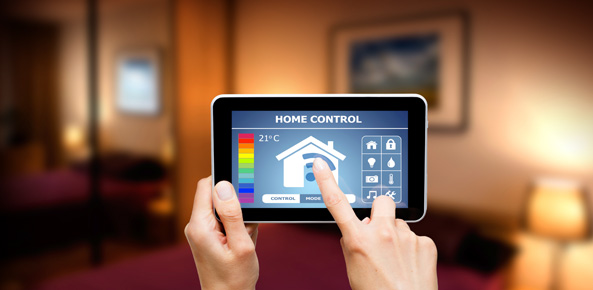Will Hackers Outsmart the Smart Home? ~ Shared by your Naples Home Watch
Here at GK Home Watch, we know how important home security is and want to share the latest news with you. Smart home security apps are becoming more popular. However, as handy as these apps are.. they have a lot of bugs. Let a professional human keep your home under watchful eye.

FOR FULL ARTICLE AND CREDITS: click here
The advent of home automation and rapid rise of smart home connected devices is seeing some vendors and new startups scramble to become a part of the movement, with ABI Research forecasting 360 million smart home device shipments by 2020.
But many companies are leaving major security flaws in the wake of their hurried attempts to penetrate the market, producing products riddled with bugs and unpatched vulnerabilities. Ignoring cybersecurity at the design level provides a wide open door for malicious threat actors to exploit smart home products.
‘We see an alarming increase in ransomware in smart TVs and IP cameras, code injection attacks, evidence of zero-day threats, and password eavesdropping for smart locks and connected devices,’ says Dimitrios Pavlakis, Industry Analyst at ABI Research. ‘The current state of security in the smart home ecosystem is woefully inadequate. Smart home device vendors need to start implementing cybersecurity mechanisms at the design stage of their products.’
Numerous attack vectors have been identified in popular smart home communication protocols, such as ZigBee, Z-Wave, and Wi-Fi. Many companies are creating and selling easy-to-tamper smart locking systems, easy-to-hack sensor systems, and products that host a plethora of software vulnerabilities. This could allow home invaders to determine when residents are out and enable them to break in more easily; cybercriminals to carry out Distributed Denial of Service (DDoS) attacks and force appliances offline in exchange for ransom; and malicious actors to steal data, and possibly even personal information, and resell them online.
Despite the bleak outlook, some smart home vendors are starting to take cybersecurity seriously. A small number of vendors, including Amazon, Apple, Google, Samsung, and Philips, now include security within the project design phase, which primarily means securing the network, making use of encryption key management, and placing limitations on communication protocols.
‘OEMs need to first think about security at the design stage and conduct risk assessments,’ concludes Pavlakis. ‘The next step is to ensure that proper security testing happens before the product goes to market. OEMs then need to offer continuous security support over the course of the product’s lifespan. Without these basic measures, the eventual financial and reputational costs to OEMs will be high in the wake of malicious hacking of smart home products.’
These findings are from ABI Research’s Smart Home Cybersecurity. This report is part of the company’s Digital Security and IoT, IoE & M2M sectors, which include research, data, and analyst insights

Recent Comments